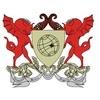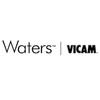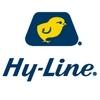Explore all the information on
Energy in poultry diets
While protein, vitamins and minerals are referred to as nutrients, energy -the 4th and most costly part of the diet- is not a nutrient but the property of energy yielding nutrients. Dietary nutrients that yield energy are protein, fat and carbohydrates. Dietary energy level is the main factor influencing feed intake, as birds will, under normal circumstances, eat to satisfy their energy needs. Therefore the dietary nutrients, protein vitamins and minerals should vary in relation to the dietary energy content of the diet, if they are not to become deficient, with low feed intakes, or overconsumed, with low energy diets. While there are a number of factors, such as level of protein, balance of essential amino acids and perhaps level of some of the other dietary nutrients, that can influence the cost of a diet, the level of dietary energy is usually the main factor influencing diet cost.
Optimizing Fat Incorporation in Broiler Feed A Cost-Effective and Nutritional Perspective Author: A.Ashraf Ali Introduction Fat is an essential component in broiler feed, serving as a highly concentrated energy source and playing a crucial role in growth performance, feed efficiency, and meat quality. Selecting the right fat source is critical to balancing cost-effectiveness, energy value, and essential fatty acid (EFA) requirements. In this article,...
Comments : 0
Recommendations: 0
Fernanda Castro (Evonik Animal Nutrition) talks about how GuanAMINO®, a source of guanidino acetic acid (GAA), supports muscle growth and energy metabolism in poultry. ...
Comments : 0
Recommendations: 4


Speculation over the Provisional Ruling on Anti-dumping Duties of Lysine by the EU Against China
Suggested link
1. Introduction In poultry nutrition, soybean meal is one of the main protein sources used due to several factors such as the percentage of crude protein (CP), its good amino acid profile, and its bioavailability [1]. However, the existence of antinutritional factors (AF) in soybean meal has been shown to have a considerable effect in reducing the bioavailability of elements in this product, such as phosphorus [2]. There is a variety of AF, including lectin, raffinose, phytate,...
Comments : 0
Recommendations: 1
1. Introduction Feed materials, such as wheat and maize, are known to be major variables when formulating poultry diets, as their nutrient profile and quality are often inconsistent and deviate from default values used by feed formulation software [1]. Additionally, the feed industry has access to a wide range of feedstuffs and the use of a particular ingredient will often depend on its cost, since least cost formulation algorithms are the industry standard [2]. Whilst...
Comments : 0
Recommendations: 3
Protein quality of the soybean meal is the result of amino acid present in the meal and the portion in the bioavailable form to the animals. While intending to utilize the same for monogastric animals, it has to be properly heat processed so as to minimize the anti nutritional effect and thereby increasing the digestibility of amino acids present in the meal. At the same time as known to everyone, it should not be over processed which will decrease the concentration and digestibility of...
Comments : 2
Recommendations: 6
The 36th edition of the APSS will be held at The University of Sydney – Abercrombie Business School, from 10-12 February 2025.
These will be some of the major themes: Layer Nutrition and Egg Quality, Broiler Nutrition, Managing Antibiotic-free Production, Sustainable use of Protein Ingredients and...
Comments : 0
Recommendations: 1
Rick Kleyn (Consultant at Spesfeed) comments on levels of protein, energy, and phosphorus when formulating poultry diets, in this Engormix interview....
Comments : 1
Recommendations: 0
Nelson Ruiz (Nelson Ruiz Nutrition LLC) A set of 24 solvent extracted commercial soybean meal (CSBM) samples, which corresponded to the same lots of CSBM used in the field, were evaluated. The CSBM were from different origins (Argentina, Bolivia, Paraguay, Trinidad & Tobago, U.S.). The objective herein was to evaluate the relationship between KOH protein solubility (KOHPS, a measurement of overprocessing) and trypsin inhibitor activity (TIA, a...
Comments : 8
Recommendations: 5
Rick Kleyn (Consultant at Spesfeed) talks about egg size, quality, and protein levels in the diet, in this Engormix interview....
Comments : 0
Recommendations: 2
I. INTRODUCTION A shortage and rising cost of major feed ingredients triggers more pressure on local poultry industries to maximize the use of alternative feed ingredients. Cassava is a potential alternative to corn. It is a good source of energy, with 60-70% of starch & 2-4 % of crude fiber (Staack et al, 2019). However, it has low protein (2%) with low methionine content (0.03%) (Morgan and Choct, 2016). When cassava meal is used at a high level, more SBM is needed to meet...
Comments : 0
Recommendations: 0
Steve Leeson (Professor Emeritus, University of Guelph) talks about the evolution of the modern broiler and its response to energy and amino acids in diet formulation, as well as the impact of energy and fat on feed costs, in this Engormix interview....
Comments : 0
Recommendations: 3
Steve Leeson (Professor Emeritus, University of Guelph) comments on the use of amino acids in broiler nutrition and the performance of low energy diets, in this Engormix interview....
Comments : 0
Recommendations: 4


Mycotoxins semiannual survey of mycotoxin in feed in 2023 Taiwan - Second Half
Suggested link
Steve Leeson (Professor Emeritus, University of Guelph) explains the advantages of Apparent Metabolizable Energy (AMEn) over other methodologies, and comments on the relevance of nitrogen retention in this Engormix interview....
Comments : 0
Recommendations: 6
Usage of nutritional emulsifiers in animal feed offers a valid strategy to improve energy, fat and protein digestibility. There are numerous nutritional emulsifiers currently on the market containing a range of active ingredients. Most emulsifiers contain phospholipids or lysophospholipids (LPL), present in lecithin or lysolecithin. An alternative active ingredient is glyceryl polyethylene glycol ricinolate (GPGR). It is important to know the hydrophiliclipophilic balance (HLB) value of...
Comments : 0
Recommendations: 0


Optimal in-feed amino acid ratio for laying hens based on deletion method
Suggested link
I. INTRODUCTION Soybean meal (SBM) is the most important plant protein source in broiler diets. Although most of the proteins in SBM are highly digestible, some proteins including glycinin, protease inhibitors, and antigenic proteins are indigestible and can cause intestinal damage and impair immune functions resulting in sub-optimal growth performance (Pan et al., 2016). The supplementation of SBM with appropriate commercially available proteases provides a potential strategy to...
Comments : 0
Recommendations: 1
by Lyndsey Johnston
Insects and derived products are possible alternative feedstuffs to improve the sustainability of the livestock sector due to several promising attributes such as limited space requirements for growing larvae, short productive cycles, limited water needs and the suitability of some species to mass rearing. Also, some insect species can contribute to circular economy models by upcycling organic side-streams from other industries into high-value...
Comments : 1
Recommendations: 0
I. INTRODUCTION Improved production efficacy in laying hens has been achieved by selecting individual birds that lay longer clutches of eggs (Dunn, 2013; Bain et al., 2016; Preisinger, 2018). In addition, the length of the productive life of hens has been extended to one hundred weeks of age or more. These 'long-life' layers were predicted to produce 500 eggs by 100 weeks of age (Bain et al., 2016; Hy-Line, 2020), and this is now being achieved commercially (Gautron et al.,...
Comments : 0
Recommendations: 1
1. Introduction The burden of high feed costs in the poultry sector calls for deeper exploration of underutilized alternatives that are rich in nutrients and have the potential to reduce livestock feed prices. Indigenous vegetables such as amaranth crops can play a significant role in the reduction of poultry expenses. The probable use of amaranth inclusion in poultry diets as a protein source has remained a subject of interest in scientific research [1]. Amaranth is considered...
Comments : 0
Recommendations: 1


Speculation over the Provisional Ruling on Anti-dumping Duties of Lysine by the EU Against China
Suggested link
Aaron Cowieson (DSM) talks about enzymes, amino acids and feed formulation in poultry nutrition, during this Engormix interview....
Comments : 20
Recommendations: 11











.jpg&w=3840&q=75)




.jpg&w=3840&q=75)


.jpg&w=3840&q=75)
















